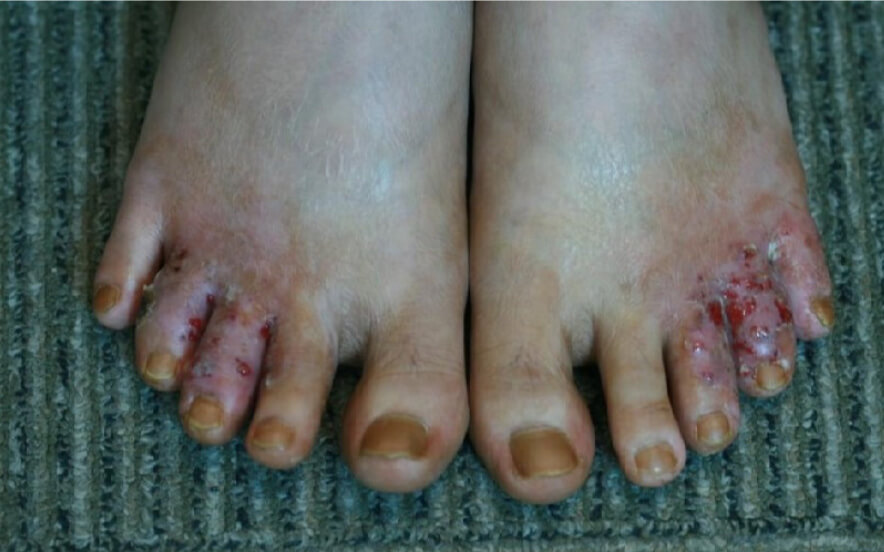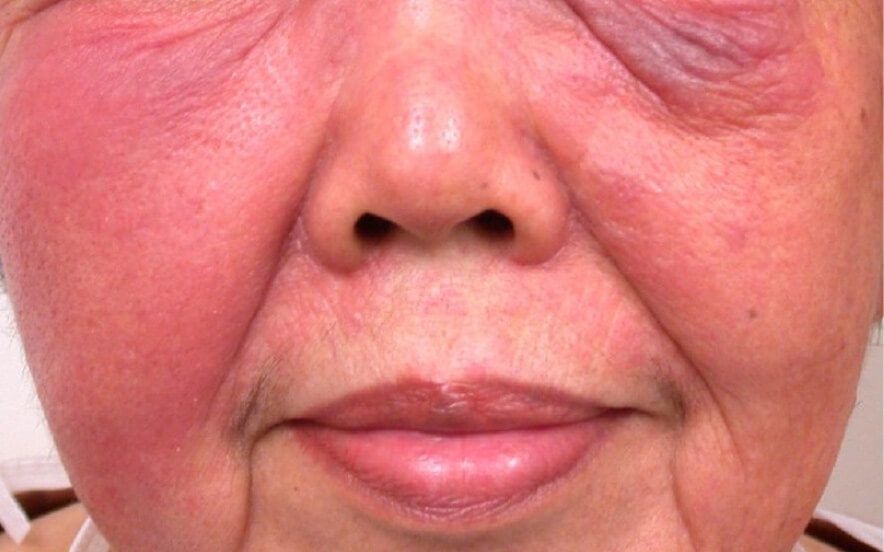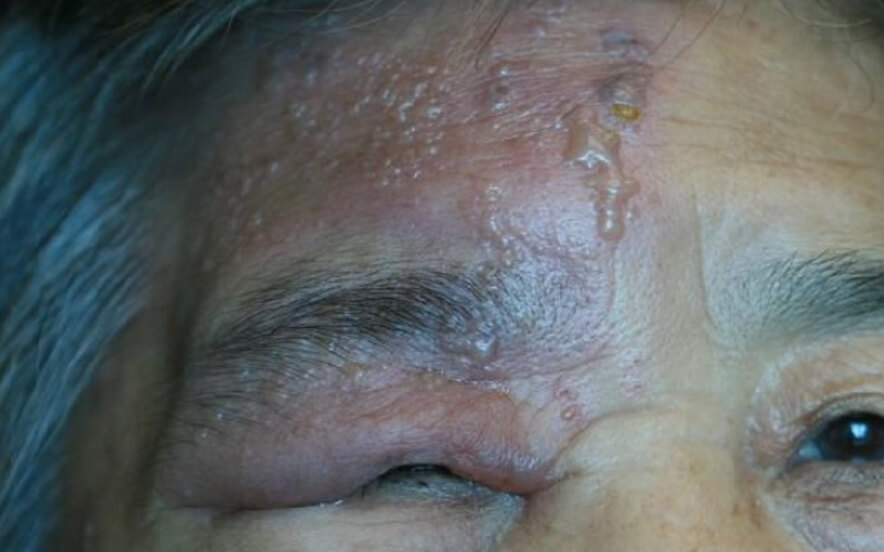1. Athlete’s foot (fungal infection of the foot)
Athlete’s foot is common among the elderly and it often appears together with fungal infection of the nails. The affected part of the foot will be dry and scaly with light to dark red inflammation of the skin. Unfortunately, it is often misdiagnosed as dry skin or eczema. It usually lasts for years and worsens with age, with very few symptoms. However, some patients do complain of itch, especially when the skin is inflamed. Athlete’s foot can also present as soggy skin with maceration at the web space between the toes and this is known as Intertrigo.
Fungal infection of the foot is often the entry point for bacteria infection of the foot in patients with diabetes. Dermatologist needs to manage this group of patient carefully to minimize the occurrence of serious infection, which sometimes may lead to the loss of limb or even life.
2. Candida (yeast) infection
Candida is a kind of yeast infection that is common in the armpits, under the breast, groin, genital and anus where sweating is common. Skin moisture, friction, occlusion coupled with the neglect of personal hygiene, promotes the growth of candida. The affected skin is often red with distinct border and surrounding satellite red spots or pustules. This condition generally responds well to topical and oral antifungal treatment.
3. Cellulitis and Erysipelas
Cellulitis and Erysipelas are both bacterial infections of the skin; the difference lies in the depth of the infection. Cellulitis is deeper, while Erysipelas is in the shallower layer of the skin.
Erysipelas usually appear as bright red rash with swelling of the skin. It spreads quickly with tight and shiny looking skin with a sharp and distinct border. On the contrary, the border of cellulitis is less distinct; the inflammatory response is not as pronounced as Erysipelas.
After the skin of an elderly person is infected with the bacteria, the initial signs may not be the same as the typical bacterial infection in younger people. They may have only a little redness, minimal to slight pain or discomfort and mild fever. Sometimes there may not even be a fever reaction and this is deceptive and misleading.
The risk factors for Cellulitis and Erysipelas include fungal infection of the foot, dermatitis, or diabetes. Treatment with oral or intravenous antibiotics is mandatory. Usually, most patients will respond within a week or two. However, some may take up to six to eight weeks to heal, and complications may arise if there are co-existing medical ailments.
4. Shingles (aka Zoster)
This is a painful blistering rash caused by chickenpox virus. The chickenpox virus continues to live on in your body after you had chickenpox infection in the past. The virus lurks in the nerve linked to your spinal cord and stays there as a permanent resident. When you are older and your immune resistance weakens, the virus comes out and multiplies along the nerve and causes the painful shingles eruption.
Typically occurring only on one side of the body along a band served by the specific nerve, the blisters are red and inflamed and are associated with nerve pain. The pain is intense and agonizing, and sometimes it can be misdiagnosed as heart attack, or acute appendicitis. With age, the incidence of shingles increases. Two-thirds of those with shingles are usually 50 years old or older. The youngest of all the cases I have ever seen is sixteen.
Effective antiviral and pain relieving treatment requires early medical attention, preferably within the first 24 to 72 hours. A fair number of patients suffer from “post-zoster nerve pain”, especially in older people, after their recovery. Early medical treatment is the only effective treatment to minimize this. However, many patients are still not receiving treatment early enough to avoid this dreadful complication and as a result, suffer pain for a lifetime.
5. Scabies
Scabies is a very itchy parasitic skin infestation caused by scabies mite. They often present as itchy rashes on the body with the itch especially at night. It is often misdiagnosed as fungal infections, or eczema.
It is usually transmitted by close person-to-person contact and is common in nursing homes for the elderly. In hospitals, scabies are also passed on to doctors and nurses from time to time. It is not easy to diagnose scabies accurately in the elderly. Because of old age, they often do not have a typical inflammatory response, but only complained of itch or minimal rashes. The attending doctors and nurses often let down their guard and end up contracting the disease.





